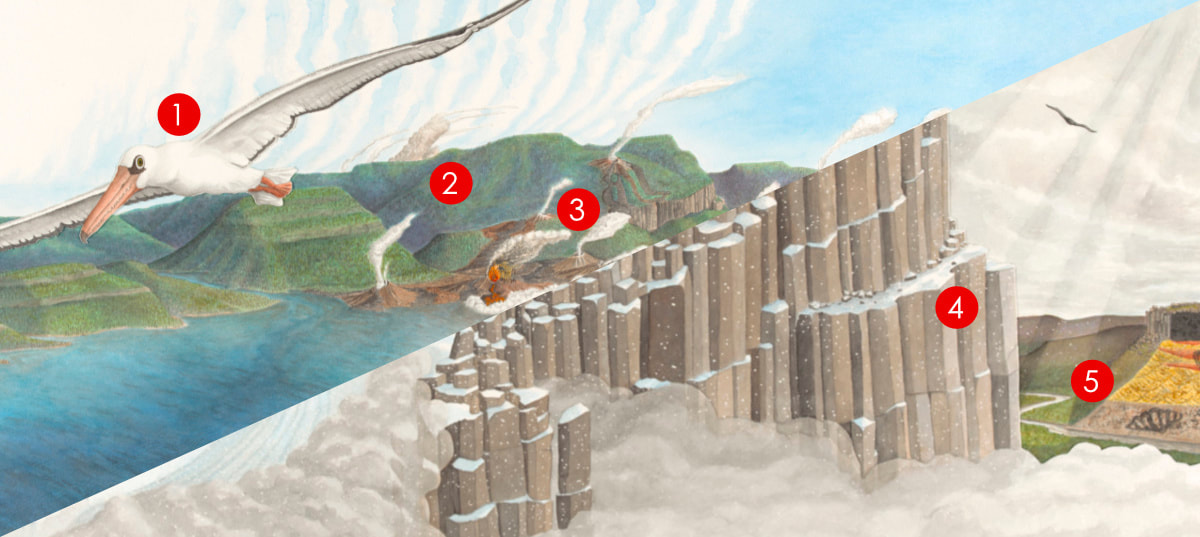Tertiary Times
The Tertiary Period covers a span of time between 66 and 2 million years ago. Beginning with the devastating events that ended the dinosaurs it is an interval during which life on the planet evolved towards the world we know today.
By the end of the Cretaceous the supercontinent Gondwanaland had all but fragmented. Its final pieces, Australia and Antarctica were pulling apart, mostly separated by ocean but held together by one stubborn point: Tasmania. Belts of granite intruded hundreds of millions of years earlier connected southern Australia and Tasmania and these were proving to be very hard to break. About 45 million years ago the relentless pulling force finally tore off a piece of what had originally been Antarctica and sent it rapidly northwards with the rest of Australia. Tasmania had officially become an Aussie.
Stretching and pulling of the crust again caused movements along both new and old fault lines, continuing to shape mountains and valleys. Ongoing erosion removed material from the land surface and deposited it into rivers, valleys and the sea. A relatively warm, moist climate became dryer over time as the continent moved north. High sea levels in the early part of the period reduced around 35 million years ago after the establishment of the circum-polar current and the isolation and cooling of Antarctica.
In Tasmania, Tertiary-aged sedimentary rocks are found at surface but can be hard to get to as they often remain where they were deposited – buried in valleys and underneath the sea.
By the end of the Cretaceous the supercontinent Gondwanaland had all but fragmented. Its final pieces, Australia and Antarctica were pulling apart, mostly separated by ocean but held together by one stubborn point: Tasmania. Belts of granite intruded hundreds of millions of years earlier connected southern Australia and Tasmania and these were proving to be very hard to break. About 45 million years ago the relentless pulling force finally tore off a piece of what had originally been Antarctica and sent it rapidly northwards with the rest of Australia. Tasmania had officially become an Aussie.
Stretching and pulling of the crust again caused movements along both new and old fault lines, continuing to shape mountains and valleys. Ongoing erosion removed material from the land surface and deposited it into rivers, valleys and the sea. A relatively warm, moist climate became dryer over time as the continent moved north. High sea levels in the early part of the period reduced around 35 million years ago after the establishment of the circum-polar current and the isolation and cooling of Antarctica.
In Tasmania, Tertiary-aged sedimentary rocks are found at surface but can be hard to get to as they often remain where they were deposited – buried in valleys and underneath the sea.



